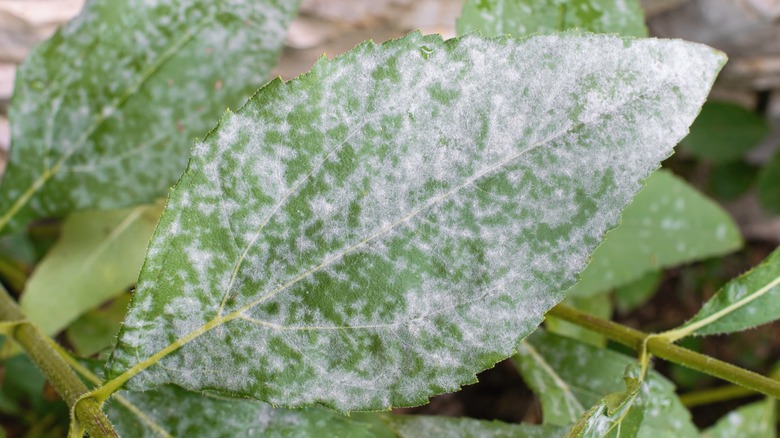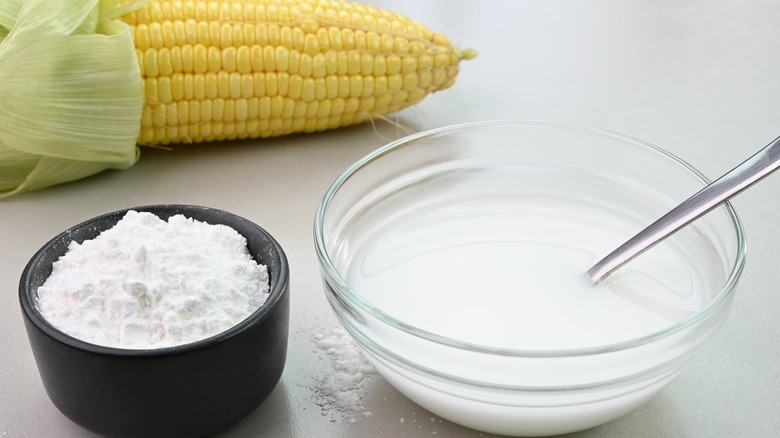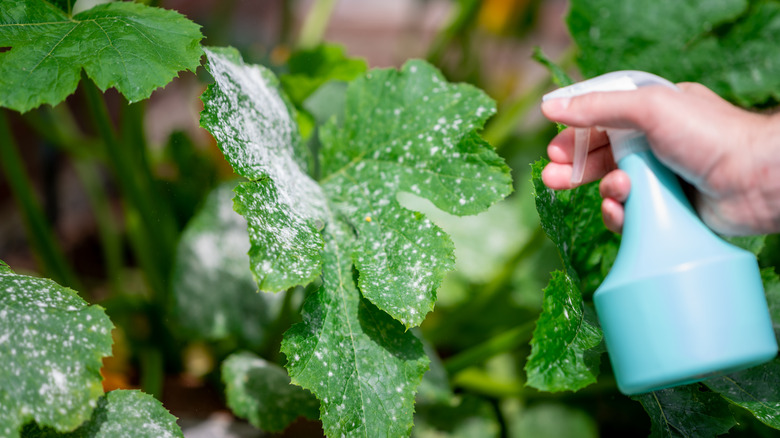Is Cornstarch The Secret To Curbing Powdery Plant Mildew?
When powdery mildew pops up, you'll want to find the quickest fix possible. The fungal disease comes in many forms based on the plant. It's not the same fungi in every outbreak, so if it affects zinnias, it may not affect the cosmos next to them. How is one supposed to combat a disease like this? The best method is to prevent conditions from getting too moist around your plants. Removing diseased plants is also guaranteed to stop the fungi from spreading. You may have heard somewhere that cornstarch can prevent and halt the spread, but is it true? There isn't any scientific evidence to prove this claim, and since cornstarch isn't an antifungal, there's no reason it would stop fungal diseases.
Even though you can't pull cornstarch out of your pantry for a quick fix, there are still many other easy ways you can take control of powdery mildew in your garden. Careful handling of your plants is the best place to start. Fungicides and horticultural oil can help, or you can use some common kitchen items.
Why cornstarch isn't the best solution
Powdery mildew can't be cured, so it's important to stop it before it's too late. The spread can be stopped by removing the plant from the garden or slowing the spread with antifungal products like fungicides or baking soda. Baking soda is an antifungal agent, according to a 2013 study in the Mycopathologia Journal. Spray a solution with baking soda on leaves to hinder fungal growth. There's word around the internet that cornstarch can behave similarly, but no factual sources support this belief. Cornstarch is made from corn endosperm. The fiber is removed from the kernels, and the endosperm is reduced to powder. Though flavorless and odorless, cornstarch is essentially just powdered corn with the healthy stuff taken out.
A 1959 study in the Nature Journal noted that young corn wasn't infected by the same fungal diseases older corn develops due to antifungal substances in the young corn. The substances were shown to inhibit the growth of two fungal diseases successfully. While this does show promising signs, remember that cornstarch is developed from older corn, which can develop fungal diseases, and this old study doesn't have any modern research to back it up.
How to treat powdery mildew
The most effective way to combat powdery mildew is to remove it from the garden. Once a plant is infected, remove the entire plant or infected portion, depending on how bad it is. For small outbreaks, baking soda can stop fungal growth by making the area too alkaline for fungi to grow. Milk is a surprising at-home solution that has varying levels of success. Create a milk and water solution containing 20-30% milk and spray it on your plants once or twice weekly to control the outbreak.
Prevent powdery mildew in the first place by controlling moisture levels in the environment. Don't overwater, and be sure to leave plenty of airflow between plants. Prune plants as needed to achieve enough air between them. If you allow infected plants to stay in the garden, remove them at the end of the season so the diseased debris doesn't drop; the spores will stay through winter and infect new plants the following year.


